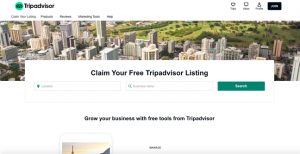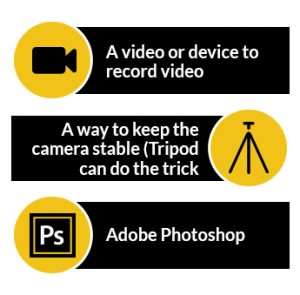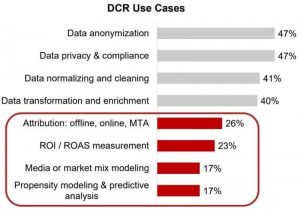The term “employee benefits” is used regularly, but often with a limited, traditional definition in mind. The traditional concept refers to legally mandated benefits plus a few voluntarily added by employers. With a new generation of employees, soon to become the majority of the workforce, and a competitive, global labor market, comes new workforce needs and expectations. Employers are responding with a menu of voluntary employee benefits, driven by generational shifts and technology that is dramatically changing the workplace.
What are employee benefits?
Employee benefits are non-salary compensation and perks. They consist of government mandated and voluntary indirect and non-cash compensation.
Federal and state mandated benefits include health insurance, worker’s compensation, unemployment insurance, and required leave time for caring for family and/or personal medical purposes. Health insurance, and family and medical leave, are not required for all businesses. Some states have mandated disability insurance and retirement plan requirements.
What are benefits that are voluntary? These are benefits an employer voluntarily offers employees, and benefits programs are a top employee recruitment, retention, and engagement strategy.
The list of benefits in this category began fairly simply with things like dental insurance and life insurance options. Today, the list of voluntary benefits has grown significantly to include things like reward programs, unlimited vacation time, and flexible work schedules. Bottom line is that voluntary benefits are any perk offered to employees that is not mandated by law.
Why are employee benefits important?
Employee benefits have always been important, but today they have new implications. Employers use benefits to attract top talent, especially in a tight labor market, and to retain employees once hired. They enable smaller companies to compete with larger businesses that may be able to pay higher salaries. Benefits also act as employee engagement tools and support a positive corporate culture. One survey found that 35 percent of American workers would not accept a position if the corporate culture was not positive, even if the job was ideal.
Millennials have had an enormous impact on the types of benefits offered and with good reason. Pew Research Center analysis of U.S. Census Bureau data found that millennials already account for 35 percent of the U.S. labor force with 56 million people working or looking for employment. They will comprise 75 percent of the global workforce by the year 2025, an important fact to know in a globalized labor market.
The question that is frequently asked is, “What are employee benefits that have meaning for millennial employees?” Some involve money, but many don’t. Numerous employee surveys and research projects, including by Gallup, have discovered millennials want meaningful work and benefits like always-on feedback. Millennials also want opportunities to develop strengths and skills, pursue career growth, enjoy work-life balance, and work remotely. These needs and expectations drive the benefits companies are offering.
Employee benefits every company should offer
There are over 300 types of benefits that employers are offering their talent. Below are some of the benefits considered most important to engaging employees.
Employee recognition
Having a culture of recognition is crucial to developing an engaged workforce. This benefit tops the list because of the high value that employee recognition brings to any organization. Employees who are regularly recognized feel more connected to the organization, reducing turnover rates and increasing productivity. The ideal way to experience the maximum benefits of employee recognition is based on two principles. One is that recognition should be an everyday event and not an occasional award. The second is that recognition should be given in real-time and in a variety of forms.
Recognition can include manager-to-employee, peer-to-peer, social, monetary, and any other form that has meaning to employees and the organization. A survey conducted by Clutch, a B2B research company, found that 47 percent of all employees value a community atmosphere in the workplace, with 55 percent of millennials feeling that way. Creating a culture of recognition is an ideal strategy for establishing and supporting your organization’s community atmosphere, even on a global scale. Recognition sends an organization-wide message that employees are not nameless, faceless people who are cogs in a revenue-producing machine. According to an Achievers report, 91 percent of employees “strongly” or “somewhat” agreed a strong recognition culture makes a company attractive to work for.
With the right employee recognition platform, organizations can easily recognize an employee’s individual accomplishments, team performance, innovative ideas, collaborative skills, birthdays, anniversaries, and any other event deserving of a celebration. You may develop awards for safety, performance, wellness, and departmental success, or perhaps you have an “Employee of the Month” or “President’s Club” award. That’s what recognition really is all about: Celebrating personal and work achievements and success.
Employee rewards
The days of giving employees an annual ham and a handshake are long gone. Just like recognition has meaning, so should rewards. Benefits management company Alight’s survey found that employees who believe the rewards meet their needs are seven times more likely to be engaged at work compared to employees who don’t feel that way about their rewards.
The most effective reward system lets employees choose their reward. For example, employees can earn points for great work and then redeem those points for a reward of their choosing. The rewards offered can include anything from gift cards, travel savings, charitable contributions, the latest tech item, and trendy fashion apparel. Some organizations develop a unique reward system to include rewards like a day off to perform charity work or to attend a child’s out-of-town athletic event.
Wellness programs
More organizations are offering wellness programs according to the annual SHRM survey. From 2017 to 2018, 44 percent of organizations increased their wellness benefits and 75 percent of employers offered a general wellness program, wellness resources and/or wellness information. Wellness program features include things like management of chronic health conditions, fitness challenges, health monitoring programs, yoga classes for stress reduction, and nutrition workshops or healthy food choices in workplace cafeterias and vending machines. When you see small groups of people walking every day during lunch hour, they are likely participating in a wellness program.
Family-friendly leave benefits
The U.S. population is aging. According to the U.S. Census Bureau, by the year 2030 all baby boomers will be over the age of 65. By the year 2035, there will be 78 million people who are over 65 years old. Older people tend to have more needs, like more medical appointments. Caregiving is usually the responsibility of younger family members. To address this issue, employers offer family leave benefits that include paid or unpaid time off to care for parents or extended family members in need of caregiving services. This is a need that will rapidly increase due to the aging population.
Flexible work schedules
Work-life balance is a common concern among today’s employees, especially millennials and Gen Z. Technology plays a part in employees wanting flexible work schedules and in employers being able to offer them. Flexible work schedules include telecommuting or working from home (or the coffee shop!), four-day work weeks, flexible work hours, and job sharing. A Deloitte study found that almost 75 percent of millennials believe that having the option of working remotely or working from home is important.
Gallup analytics found that 53 percent of employees say work-life balance is very important when considering whether to take a job, and flexible work arrangements are central to enabling work-life balance. Flexible work schedules also address growing urbanization and its challenges, like traffic jams.
Employee assistance programs
The Employee Assistance Program (EAP) is a safety net for employees who must cope with stressful personal or work issues that create stress or anxiety. The work-based intervention program helps employees resolve stress-inducing problems. The Anxiety and Depression Association of America says that 72 percent of people who have daily stress say it interferes with their lives at least moderately, and 40 percent experience persistent stress in their daily lives.
People don’t leave their personal selves at the door when they show up for work. At the same time, work-related stress can cause problems in the personal lives of employees. The EAP offers employees resources that help them navigate life issues that may impact their ability to remain productive, like counselors specializing in mental health, substance abuse, financial difficulties, managing work changes, and family conflicts.
Career development opportunities
Deloitte does an annual millennial survey, and the last one found that millennials and Gen Z are concerned about their lack of readiness for industry 4.0. Only 36 percent of millennials and 29 percent of Gen X believe their employers do enough to help them develop the skills and knowledge to thrive in industry 4.0, build interpersonal skills, and develop confidence and ethical behaviors.
The global consulting firm Mercer surveyed large employers in 2018 to investigate voluntary turnover. Millennials accounted for half of the separations at 51 percent, and Gen X accounted for 25 percent. The Mercer study found the two top reasons people left was for promotion opportunities and career changes. Another way to say it is that the top reasons talent leave an organization because they feel stale in their jobs, have no upward mobility, or are not gaining new skills or developing their strengths.
Transparency and feedback
Organizations need to encourage transparency in the workplace and implementing an employee feedback system is a key strategy. Employees who believe their voice is heard in the workplace are 4.6 time more likely to feel empowered and to perform their best work. A formal feedback process gives everyone an equal voice and an equal opportunity to express that voice, reducing the biases found in one-on-one annual performance reviews.
Ongoing feedback builds trust between employees and between employees and their managers. Gathering feedback in real-time goes beyond just an annual performance review and holds value for any organization looking to improve. The most effective feedback tools enable managers to continually listen to employees, take action, and impact engagement right away.
To meet the needs of today’s employees, the feedback process should be fluid and personal. Fortunately, technology makes this easy through tools like chatbots, pulse surveys, and check-ins.
Perks, perks, and more perks
One of the advantages of a benefits program is that employers can customize the offerings to fit the needs of their employees. Some companies offer to reimburse employees for student loans or tuition expenses, or they make student loan payments. Providing access to affordable daycare is growing in popularity. Employers are adding daycare facilities on-site, offering reimbursement for a percentage of daycare expenses, or signing contracts with a nearby daycare to provide reduced cost services to employees.
Perks can be anything you want them to be. There’s a reason more companies are having “bring your pet to work” days and offering yoga classes and creating quiet space. These perks make employees happy!

Employee benefits are engagement tools
So after all this, what are employee benefits? There is no doubt at all that benefits have taken on new importance as employee engagement tools. The needs and expectations of the modern workforce have changed considerably with the appearance of millennials, and now Gen Z, in the workforce.
Employees want to be recognized, rewarded, appreciated, continuously in-touch with managers and peers, and engaged. You can learn more about keeping your workforce engaged and motivated by accessing Achiever’s eBook, “How to Incentivize the Modern Workforce.” It’s a step towards creating a more engaged and motivated workforce.
Business & Finance Articles on Business 2 Community
(24)







